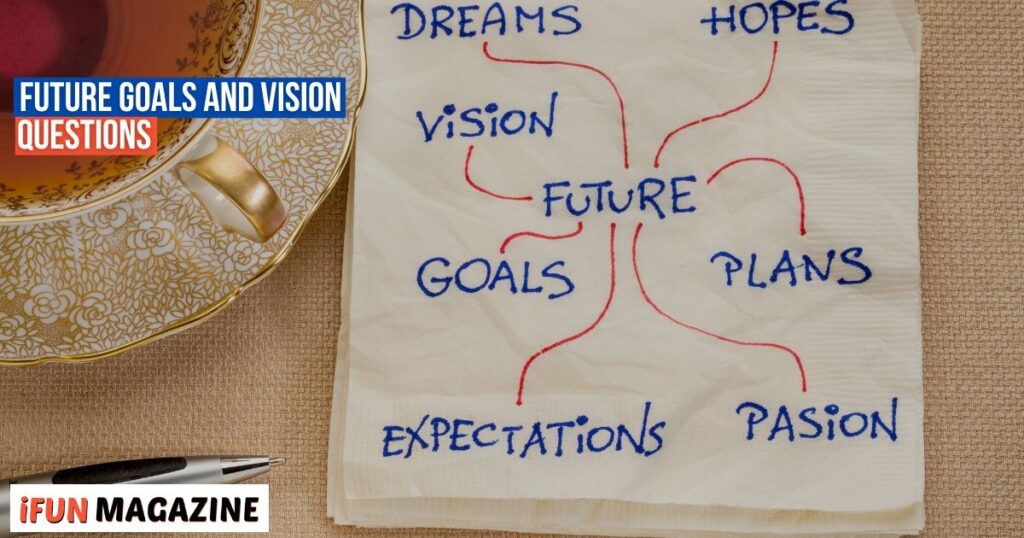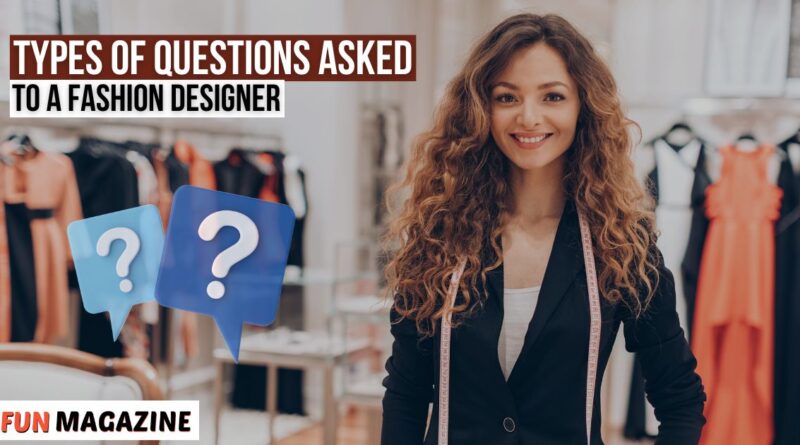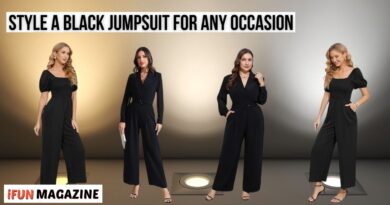Fashion design is a dynamic and creative industry that continues to captivate aspiring designers, students, and enthusiasts alike. The art of crafting unique apparel and accessories requires more than just talent.
It demands technical knowledge, industry awareness, and problem-solving skills. Whether pursuing a career in fashion or simply curious about a designer’s life, asking the right questions can offer valuable insight into their craft.
This blog explores the questions frequently directed at fashion designers, helping you understand what makes them tick and how they approach their work.
Understanding the Role of a Fashion Designer
A fashion designer is responsible for more than just sketching and creating trendy outfits. Their role involves turning abstract ideas into wearable designs, selecting fabrics and materials, and closely monitoring emerging trends. Designers must also balance creativity with practical considerations, working closely with manufacturers, stylists, and retailers to ensure their vision comes to life.
Fashion designers wear many hats, and understanding their roles starts with asking the right questions.
Also Read: How Much Does a Normal Jumpsuit Cost?
Why Asking Questions is Important
The questions posed to a fashion designer often uncover their skills, creativity, and industry expertise. Whether during an interview, for a student project, or out of casual curiosity, these questions offer a glimpse into the mind of someone shaping the future of fashion.
For aspiring designers and fashion students, learning how to ask meaningful questions can also lead to insights that inspire their work or guide their studies.
Categories of Questions Asked to Fashion Designers
To streamline this exploration, let’s categorize the common questions aimed at fashion designers based on context and purpose.
1. General Background Questions

Educational Background
Example: “What qualifications do you have in the field of fashion design?”
Purpose: Understand their formal training and credentials.
Knowing a designer’s educational background is a great way to learn about their foundation in fashion design. Professional qualifications show the technical skills they have acquired from studying this creative field. These credentials tell you if they have received formal lessons in textiles, pattern-making, or design software.
Additionally, asking about their education can help you understand how they apply theory to real-world projects. It also reveals whether they have been mentored by industry experts. Learning this can be inspiring and informative if you want to follow in their footsteps.
Inspiration and Passion
Example: “What inspired you to pursue a career in fashion design?”
Purpose: Explore their motivations and personal connection to fashion.
This question lets you learn the story behind a designer’s love for fashion. Every designer has something that sparked their interest in this artistic field, whether it’s a childhood passion, a mentor’s guidance, or an admiration for cultural trends.
It helps you understand their emotional connection to their craft and what motivates them. This could even inspire your personal career path. Discussing their inspirations also provides insight into their unique perspective on creativity and innovation.
Work Experience
Example: “Can you give an example of a significant project you have worked on?”
Purpose: Assess professional experience and expertise.
Learning about a designer’s past projects is an excellent way to gauge their skills. By sharing details about a high-impact project, they reveal how they approach challenges and deliver solutions. It gives you a sense of their techniques and ability to bring ideas to life.
This can also highlight the unique styles and trends that shape their work. Their experiences encourage young designers to take risks and develop their voice in fashion. Sharing projects also demonstrates the exciting possibilities awaiting hard-working individuals in this industry.
2. Creative Process and Skills Questions
Design Inspiration
Example: “Where do you draw inspiration for your designs?”
Purpose: Learn about their creativity and sources of ideas.
Understanding where a designer finds inspiration reveals their thought process and creative vision. They may draw from nature, art, history, or everyday life, opening unique paths to innovation. Their inspirations also demonstrate how they connect with trends and craft original designs. This knowledge motivates aspiring designers to explore new sources and think outside the box.
Design Techniques
Example: “What tools or software do you use for creating designs?”
Purpose: Evaluate technical skills and familiarity with industry tools.
By asking about their tools, you discover their technical expertise and versatility. Familiarity with design software shows their ability to work efficiently in a modern environment. It also highlights their adaptability to evolving technology in the fashion industry. Exploring techniques guide beginners in identifying essential skills to develop for future success.
Problem-Solving
Example: “How do you deal with difficulties when a design doesn’t work out as planned?”
Purpose: Gauge adaptability and problem-solving abilities.
This question explores their approach to overcoming setbacks and staying motivated. Learning their problem-solving process reveals resilience and critical thinking skills. It also fosters inspiration by showing how challenges can lead to innovation. Understanding these strategies helps others handle failures and persevere in creative fields.
3. Industry and Trend Awareness Questions

Knowledge of Trends
Example: “How do you stay updated on the latest fashion trends?”
Purpose: Test awareness of the evolving fashion landscape.
Staying informed about fashion trends ensures designers remain relevant in a competitive industry. Following fashion weeks, reading magazines and social media keep them aware of new developments. Designers who stay updated can align their work with current customer preferences. This question reveals the designer’s efforts to understand and predict market styles effectively.
Target Audience Understanding
Example: “How do you design for specific customer demographics?”
Purpose: Assess their ability to tailor designs to meet customer needs.
Understanding customer demographics helps designers create styles that suit their audience’s preferences. Learning about their methods for gathering customer insights shows their dedication to personalized designs.
Designers who understand their audience can deliver designs that resonate and increase customer satisfaction. This approach helps businesses build trust and long-term loyalty.
Sustainability Practices
Example: “What steps do you take to ensure your designs are eco-friendly?”
Purpose: Understand their commitment to sustainability in fashion.
Sustainability practices showcase a designer’s responsibility toward the environment and ethical fashion. Designers addressing sustainability use eco-friendly materials, reduce waste, and support ethical production.
Evaluating their efforts highlights their values and ability to adapt to environmentally conscious demands. This also helps inspire others to make sustainable choices in their work.
4. Project and Teamwork Questions
Collaboration
Example: “How do you work with other professionals, such as stylists or fabric suppliers?”
Purpose: Evaluate communication and teamwork skills.
Working with other professionals requires clear communication to complete tasks successfully. Designers collaborate with stylists, fabric suppliers, and manufacturers to create cohesive designs. They discuss ideas, plans, and changes to keep the project on track.
Strong teamwork ensures that every contributor remains aligned and delivers quality results. This skill helps them adapt to different working styles and resolve conflicts quickly.
Project Management
Example: “How do you manage deadlines and multiple projects?”
Purpose: Test organizational and time-management abilities.
Managing deadlines means prioritizing tasks and breaking them into manageable steps to stay organized. Designers often balance multiple projects by creating schedules and following timelines. They update their plans when unexpected issues arise so that they finish on time. This approach ensures that their work is delivered efficiently without compromising quality. Good planning helps avoid stress and keeps all projects moving smoothly.
Client Interaction
Example: “How do you handle feedback from clients?”
Purpose: Explore their interpersonal skills and customer-centric approach.
Handling client feedback involves listening carefully to understand their suggestions and concerns. Designers respond professionally to give clients confidence in their ideas. They work with clients to make adjustments that meet expectations and improve results.
Respecting client opinions builds trust, shows flexibility, and enhances the overall design process. Effective communication keeps clients satisfied and strengthens the relationship.
5. Future Goals and Vision Questions

Career Goals
Example: “Where do you see yourself as a fashion designer in the next five years?”
Purpose: Learn about their long-term ambitions.
Fashion designers often aim to refine their skills and establish a strong reputation. They plan to create innovative and inspiring designs that appeal to diverse audiences. Many envision starting their own fashion labels or expanding existing businesses globally. They work towards gaining recognition for their unique style and creative achievements.
Building a loyal customer base and earning industry awards are also common ambitions. Staying updated with modern trends is vital for continued growth and relevance in fashion. Achieving these goals requires hard work, dedication, and a clear vision for success.
Vision for Fashion Industry
Example: “What changes would you like to bring to the fashion world?”
Purpose: Discover their perspective on innovation and influence in the industry.
The future vision involves promoting sustainable practices to reduce waste and protect the environment. Designers hope to create more inclusive fashion representing all body types and cultures. Introducing affordable collections without compromising quality is another way to positively impact the industry.
Many aim to make fashion accessible and empower people through their clothing choices. They plan to use technology to revolutionize fashion, like digital designs or smart attire. Encouraging collaboration between designers worldwide fosters innovation and cultural exchange. Their vision reflects a desire to leave a meaningful, lasting influence on the global fashion scene.
Key Insights from the Questions
Creativity and Innovation
The questions test how you think, develop ideas, and solve problems uniquely. They help interviewers understand your ability to bring fresh ideas to projects.
Technical Skills and Expertise
These questions show your hands-on expertise in stitching, designing, pattern-making, and using technology. Answering them showcases your technical abilities and your dedication to learning the craft.
Industry Knowledge and Adaptability
Your answers demonstrate your knowledge of trends, market demands, and industry standards. They reveal how flexible and willing you are to keep up with changes.
Tips for Aspiring Fashion Designers
1. Prepare Thoughtful Answers
Practice answering questions about your skills, designs, and goals before an interview. Be honest and transparent to show confidence and authenticity in your responses.
2. Build a Strong Portfolio
Gather your best work to create a neat and impressive portfolio. Include designs that show your creativity, technical skill, and ability to adapt to trends.
3. Stay Updated and Network
Learn about new trends and technology from magazines, online media, and workshops. Attend fashion events to connect with industry professionals and gain valuable advice.
By following these tips, aspiring designers can confidently showcase their potential and build a strong foundation for success in the fashion industry.
Conclusion
Fashion design is an intricate art that goes beyond aesthetics. It combines creativity, technical expertise, and an understanding of societal trends. Asking meaningful questions to a fashion designer sheds light on their craft. It inspires anyone looking to enter this dynamic industry.
If you’re an aspiring designer eager to jumpstart your career, practice posing these questions to experienced professionals, teachers, or peers. And most importantly, don’t be afraid to ask “Why?”—it’s often the most revealing question.
Get ready to unlock valuable insights and bring your creative vision to life!




